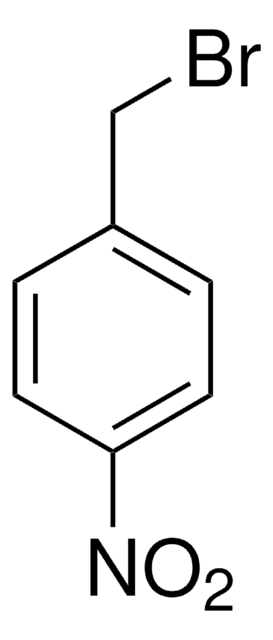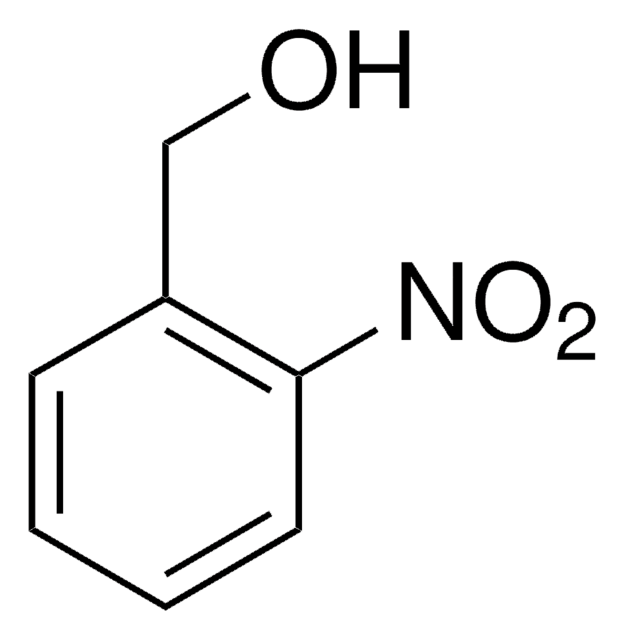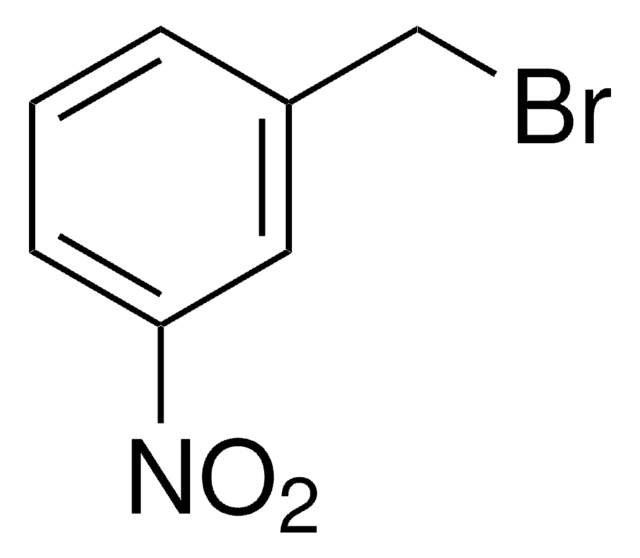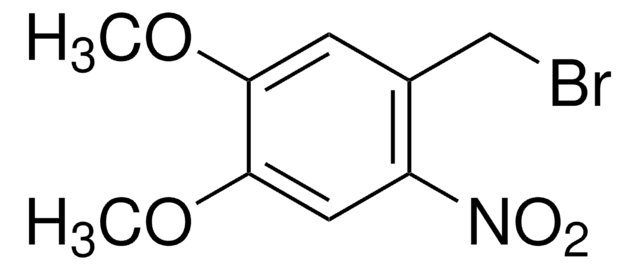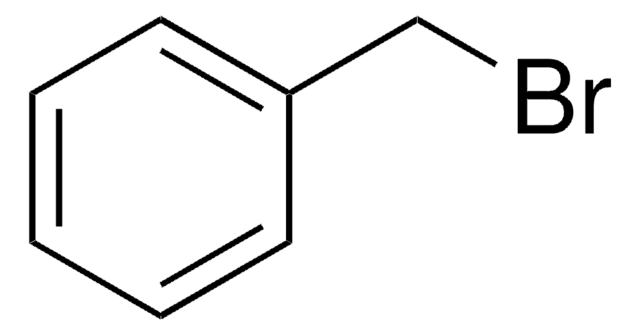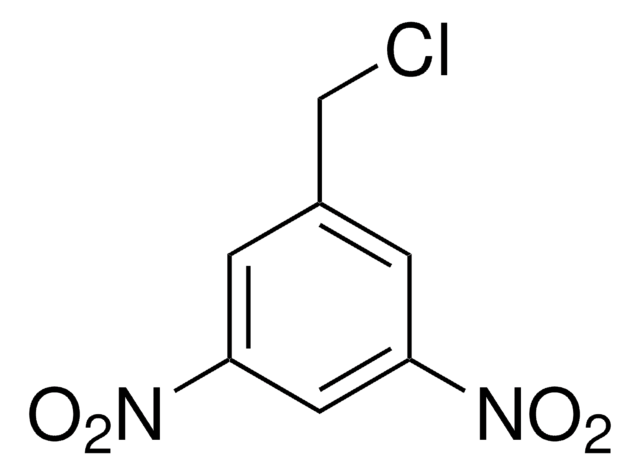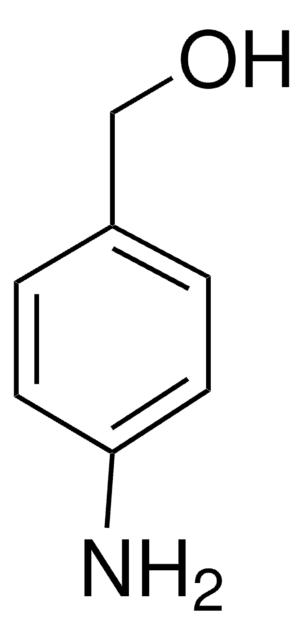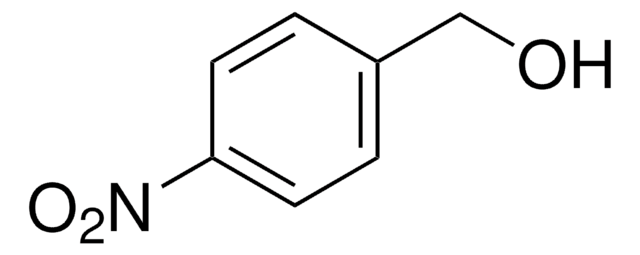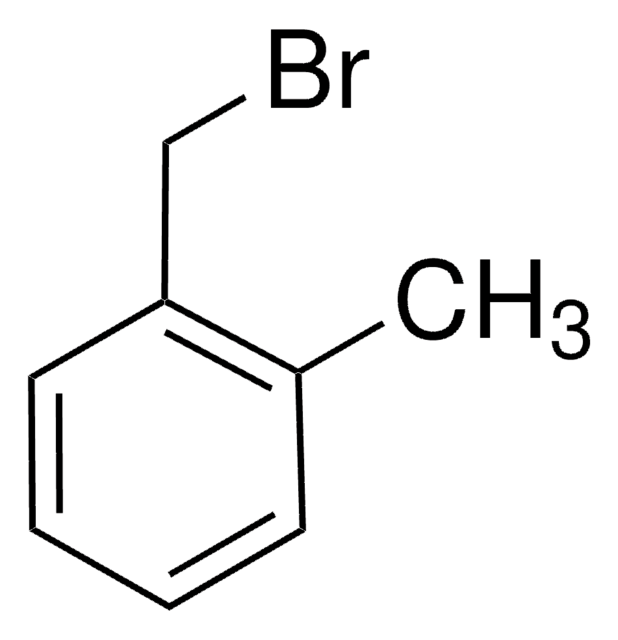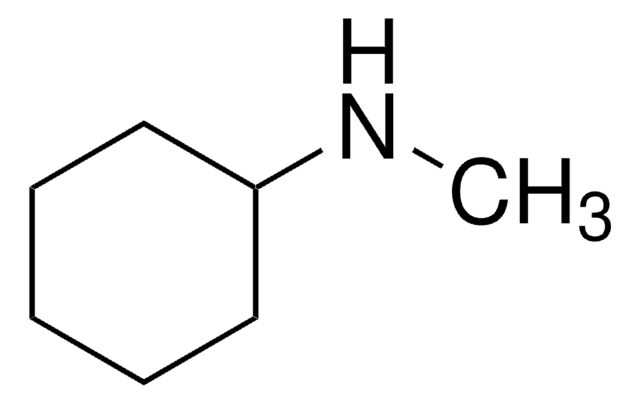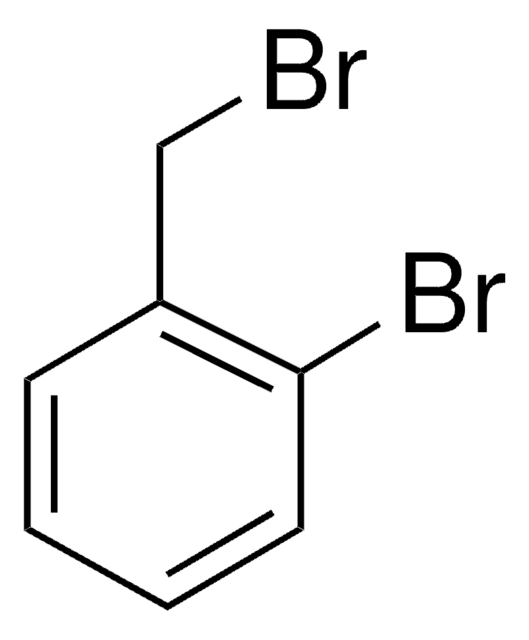추천 제품
분석
98%
양식
solid
mp
44-46 °C (lit.)
작용기
bromo
nitro
SMILES string
[O-][N+](=O)c1ccccc1CBr
InChI
1S/C7H6BrNO2/c8-5-6-3-1-2-4-7(6)9(10)11/h1-4H,5H2
InChI key
HXBMIQJOSHZCFX-UHFFFAOYSA-N
유사한 제품을 찾으십니까? 방문 제품 비교 안내
애플리케이션
2-Nitrobenzyl bromide was used for caging unprotected cysteine-containing or thiophosphorylated peptides in aqueous solution. It can be used in the synthesis of (R)- and (S)-3-amino-3,4-dihydro-1H-quinolin-2-one.
생화학적/생리학적 작용
2-Nitrobenzyl bromide reacts with L-cysteine to form S-2-nitrobenzyl-cysteine which was used for modification of ultra-low-gelling-temperature (ULGT) agarose.
신호어
Danger
유해 및 위험 성명서
Hazard Classifications
Eye Dam. 1 - Skin Corr. 1B
Storage Class Code
8A - Combustible corrosive hazardous materials
WGK
WGK 3
Flash Point (°F)
230.0 °F - closed cup
Flash Point (°C)
110 °C - closed cup
개인 보호 장비
Eyeshields, Faceshields, Gloves, type P3 (EN 143) respirator cartridges
이미 열람한 고객
Kyoung-Ho Park et al.
International journal of molecular sciences, 20(16) (2019-08-21)
A kinetic study was carried out on the solvolysis of o-nitrobenzyl bromide (o-isomer, 1) and p-nitrobenzyl bromide (p-isomer, 3), and o-nitrobenzoyl chloride (o-isomer, 2) in a wide range of solvents under various temperatures. In all of the solvents without aqueous
Ying Luo et al.
Nature materials, 3(4), 249-253 (2004-03-23)
Tissue engineering aims to replace, repair or regenerate tissue/organ function, by delivering signalling molecules and cells on a three-dimensional (3D) biomaterials scaffold that supports cell infiltration and tissue organization. To control cell behaviour and ultimately induce structural and functional tissue
A practical synthesis of (R)-and (S)-3-amino-3, 4-dihydro-1H-quinolin-2-one.
Hulin B and Lopaze MG.
Tetrahedron Asymmetry, 15(12), 1957-1958 (2004)
P Pan et al.
FEBS letters, 405(1), 81-85 (1997-03-17)
Photoreleasable molecules are important in studies of various biological phenomena, especially cell signaling. Here we report a generally applicable approach for 'caging' unprotected cysteine-containing or thiophosphorylated peptides in aqueous solution with 2-nitrobenzyl bromides. Photolysis of the caged peptides was achieved
William L Scott et al.
Journal of combinatorial chemistry, 11(1), 14-33 (2008-12-25)
Distributed Drug Discovery (D(3)) proposes solving large drug discovery problems by breaking them into smaller units for processing at multiple sites. A key component of the synthetic and computational stages of D(3) is the global rehearsal of prospective reagents and
자사의 과학자팀은 생명 과학, 재료 과학, 화학 합성, 크로마토그래피, 분석 및 기타 많은 영역을 포함한 모든 과학 분야에 경험이 있습니다..
고객지원팀으로 연락바랍니다.